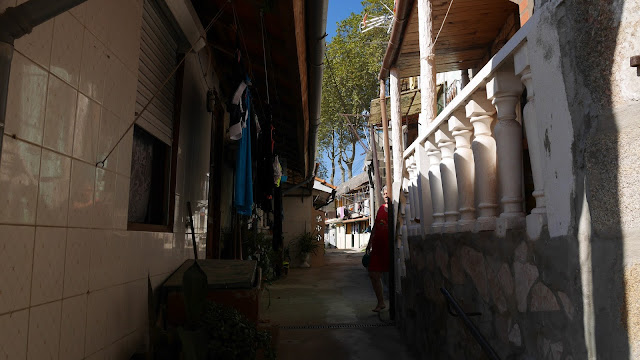 |
| 171 Praca da Batalha. |
Going a bit deep here so forgive me. One of the reasons I keep returning to Europe despite its middle-class malaise is that its impulse to shake off the past and reinvent itself is healthfully muted. There is an undercurrent of maturity in matters of art and food — it is a continent comfortable in its own skin. This is an unconventional way to begin discussing a place known for its hot dogs, but sometimes you run across an establishment so aligned with the needs and sensibilities of its neighborhood, in this case the rough-and-tumble streets behind the Sao Bento train station, that you can’t help but take notice.
 |
| Try the cachorro especial. |
This sandwich from Cerverjaria Gazela (called a “special hot dog” by an earnest extension of the term) is grilled bread hugging white cheese and aged sausage, sliced into bite-sized pieces. It is crunchy and addictive and, incidentally, why Super Bock was invented. I cannot imagine what it’s like for Fernando and Alberto to work together in a 4-by-7 space every day, but they make a great team.
 |
| Menu. |
By way of bidding farewell to a valued customer, Fernando clasped his wrist with two hands and wouldn’t let go. It took me a moment to realize this was an act of condolence. The customer, his cheeks sagging red and white, had lost a spouse or grandchild or a dog and Fernando kept saying, “I’m so sorry.”
“Speaks to you … beautiful ... do you understand? … Not yet. … What do you dream about?” These were the chopped up words I thought I could make out. At this point, the adolescent aloofness that characterizes street-level retail back home seemed very distant indeed.
The most analogous North American restaurant I can think of is Swan Oyster Depot in San Francisco, a 12-stool anchorage where people go when they’re hungry for chowder or a crab salad — and, just as importantly, the old-school values of precision and liveliness and compassion.
Please find this place. It’s tucked away in Batalha Square near the Sao Joao National Theater.




















































